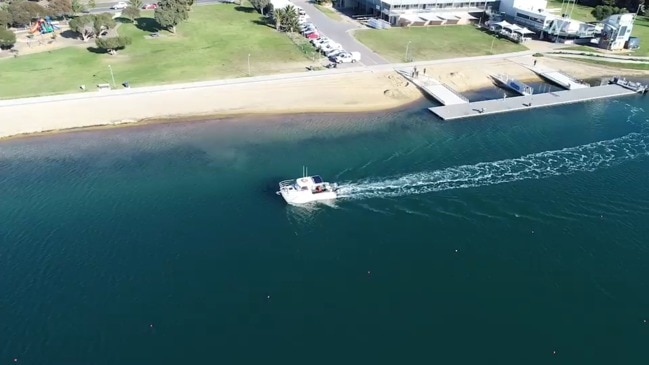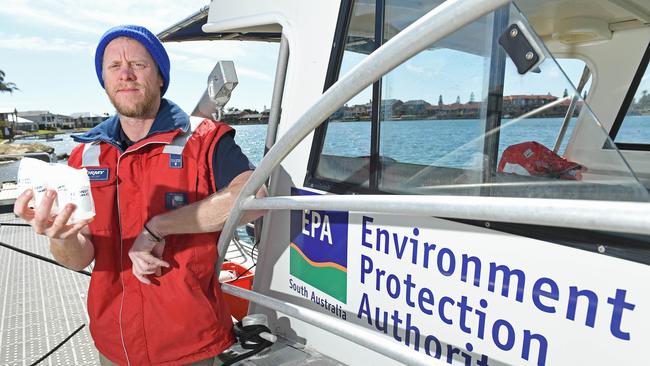EPA begins PFAS testing at West Lakes
Scientists at the Environment Protection Authority are testing water, fish and crustaceans at West Lakes in a search for the source of the PFAS pollution.

- West Lakes soil contamination likely to include PFAS
- PFAS in fish from West Lakes expected to be at low levels
- How to get the most out of your Advertiser subscription
A fishing expedition of a different kind has begun in West Lakes as the state’s Environmental Protection Authority investigates the PFAS contamination.
Recent testing at the former Port Adelaide wastewater treatment plant and nearby found PFAS (per- and poly-fluoroalkyl substances) in soil, groundwater and sewage sludge samples.
Sewage sludge from the site used in the West Lakes development is likely to also contain PFAS.
EPA director of regulation Peter Dolan says the team will investigate whether PFAS has migrated through the soil into groundwater or surface waters including the lake and whether it has accumulated in the fish and shellfish or crustaceans.

“On one level, it’s a simple precautionary thing, to make sure people are not exposed to something which is a hazard to them,” he said.
“We can get that answer quite quickly but of course there‘s other things we’re trying to do here too, we’re trying to identify the source.
“So if we find PFAS has nothing to do with sewage sludge that raises other questions, I think that’s unlikely.”
Lake water will be assessed using the NHMRC guidelines for managing risk in recreational water.
The EPA is sampling at six locations in the lake, with a focus on more popular recreational areas and two of the main stormwater drains that enter into the lake.
Up to 15 groundwater monitoring bores will also be sampled, to determine if PFAS is in the groundwater and moving into the lake.
The scientists are also targeting fish and crustaceans with a focus on species that people are likely to consume.

For fin fish, they analyse three parts of the animal: the fish fillet, frame and viscera or internal organs such as kidney and liver “because we’re interested in where in the animal the PFAS is”.
The EPA will then work with SA Health to check the results against the allowable daily intake for PFAS.
The EPA is testing for the full suite of fluorinated alkyl substances (33 different chemicals) and nine metals such as cadmium.
Concerned residents are invited to contact the EPA on 8204 2004.

